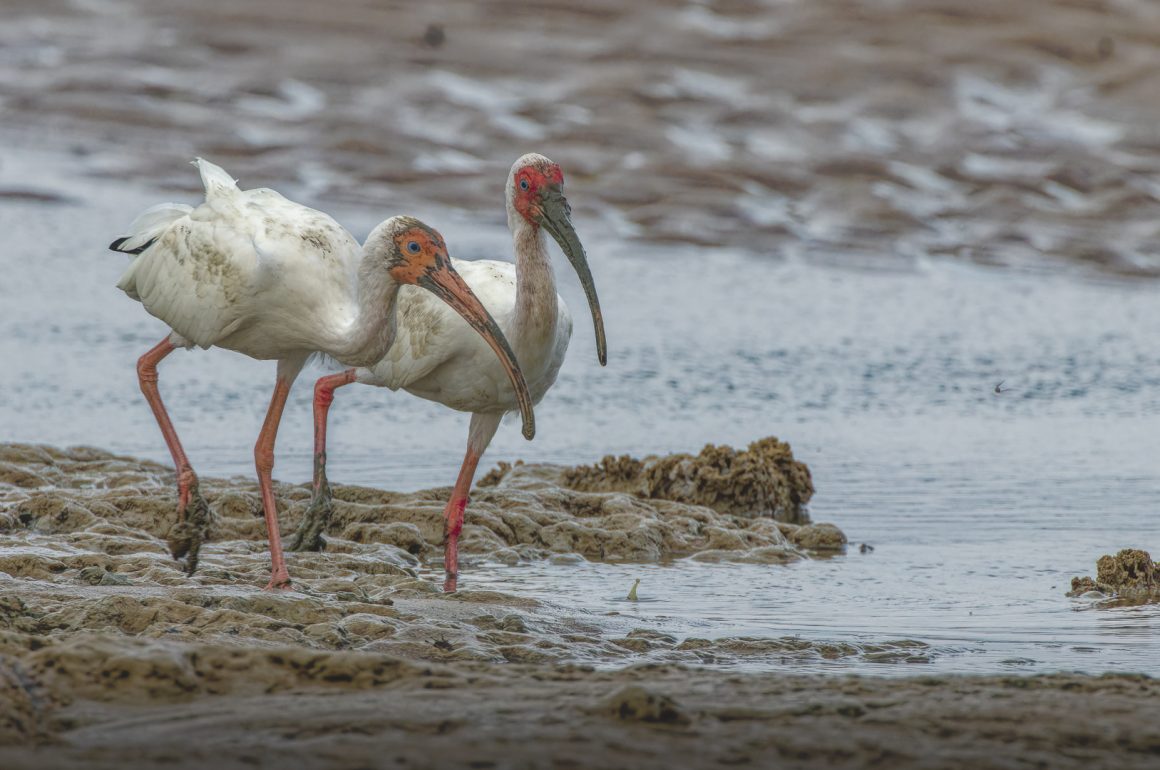
Panamá’s Pacific coast is a blend of beaches and dense mangroves, a harmonious meeting of land and sea that supports an incredible diversity of life. The mangroves, with their intricate root systems, serve as a natural barrier against erosion and provide shelter for countless species. But it’s when the tide recedes that the real magic is revealed.
As the ocean retreats, in my local area, it unveils a hidden world of rocky mudflats on one end of the beach. The rich silt, carried by the ebbing tide from the mangroves, spreads across the flats, creating a fertile feeding ground for shorebirds. The area becomes a haven, teeming with life as small crabs and other invertebrates emerge from the mud. For the birds that call this area home or those just passing through these mudflats are a banquet, offering a feast of opportunities.
On this particular evening, the skies were a bit overcast with the usual high humidity of the Panamanian weather, but still, I set out from my home for the short walk to the seashore and hopefully, newly exposed flats of the low tide, eager to witness the spectacle of shorebirds drawn to the feast.
Ten minutes into the walk I arrived at the shoreline, I stood facing the ocean observing the many ships, large and small, anchored out at sea awaiting their turn to enter the Miraflores Lochs and cross the famous Panama Canal.
Diverting my attention back to the “rason d’etre” , I quickly spotted a Little Blue Heron. Its slate-blue feathers contrast beautifully against the muted tones of the mudflats.
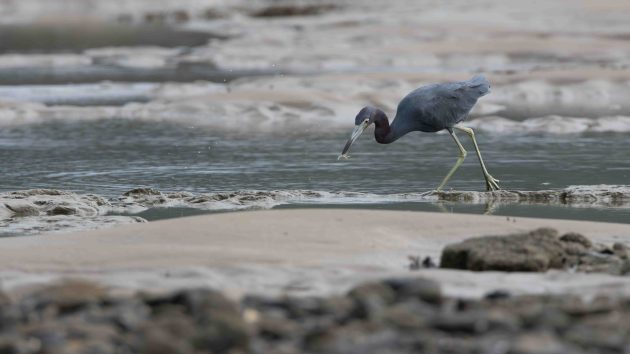
The heron moves with deliberate grace, each step carefully calculated as it searches for small fish and crustaceans hidden in the silt. This bird is a year-round resident, a familiar sight along the shoreline. I can’t for the life of me understand why its called a Little Blue Heron when it is obviously a large birds.
Nearby, a Great Egret stands tall, its elegant, long neck curving as it watches the water intently.
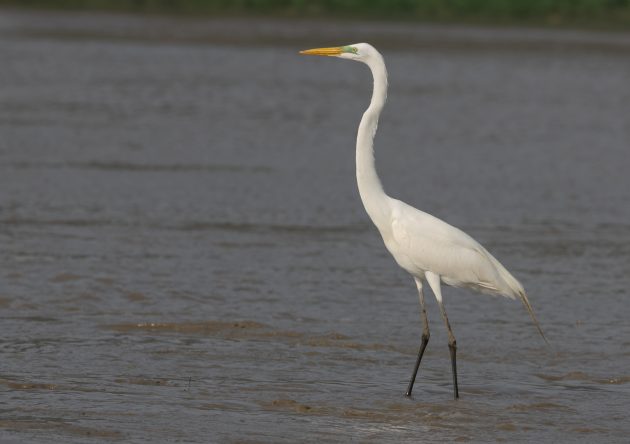
The Great Egret, with its striking white plumage and yellow bill, is a resident in this area. Its graceful movements are mesmerizing. As I watch, it strikes quickly, pulling a small fish from the shallow water with a swift jab of its bill. Great Egrets are common in this area, they can be seen in small flocks or alone standing completely still as they stalk their prey.
Not far from the Great Egret, a Snowy Egret wades through the shallows.
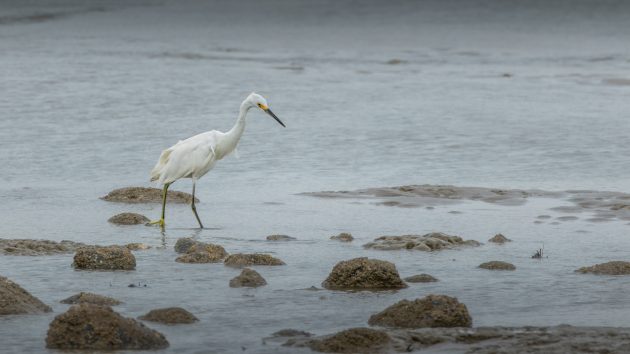
Its bright white feathers are almost glowing in the fading light, and its feet seem to dance as it stirs the water, flushing out prey. The Snowy Egret is another resident species, and its energetic foraging style never fails to entertain.
The White Ibis are a common sight on these mudflats, most days they can be seen feeding here when the tide goes out and they are not too bothered by the presence of humans who also search the flats for oysters and other shellfish.
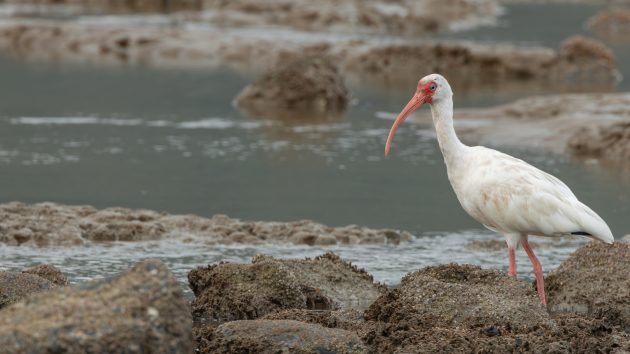
A little further along, a Brown Pelican glides somewhat effortlessly above the water.
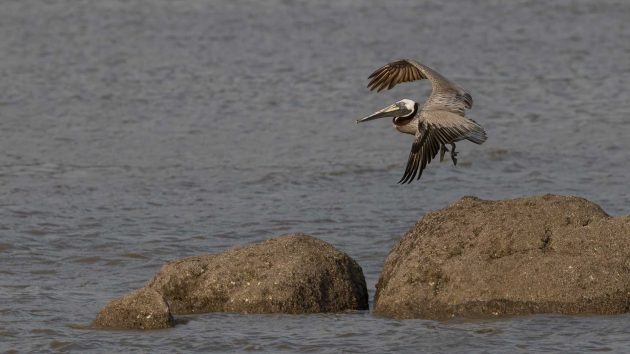
Pelicans are a permanent fixtures along Panama’s coast, their aerial acrobatics a common and thrilling sight. They can be seen in large numbers either in the sea or roosting on trees along the costal roadways.
The Yellow -Crowned Night Herons are a common sight here in the mud flats.
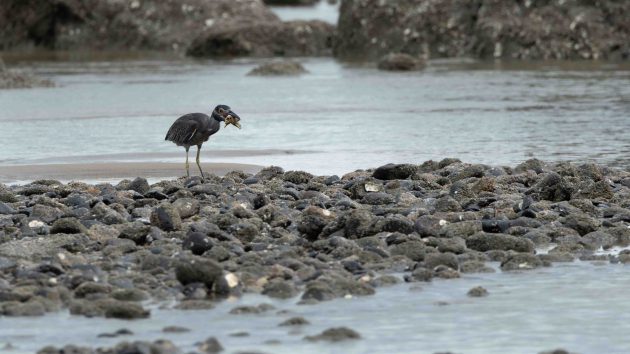
This heron is a master of patience, often seen standing still or slowly stalking its prey, which mainly consists of crustaceans like crabs and shrimp.
As I continue my walk, a Willet quietly search the flats for its meal, and its in luck as it catches a shrimp .
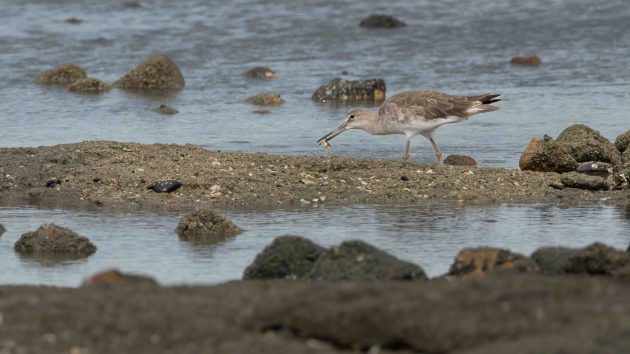
This migratory shorebird spends its winters here, its gray-brown plumage blending in with the surroundings as it forages for food. The Willet’s presence is a reminder of the seasonal rhythms that play out on this coastline, with birds arriving and departing in tune with the changing tides and weather.
The Whimbrel is a notable sight along the coasts of Panama West, particularly during migration seasons.
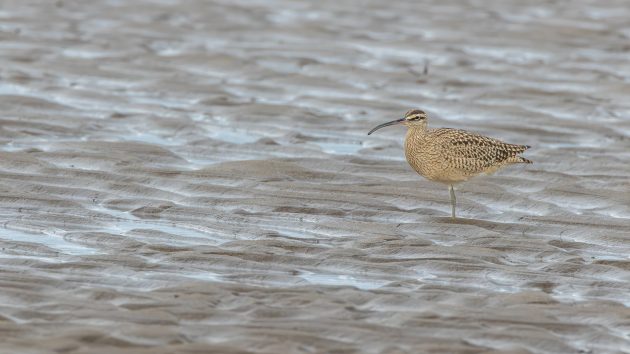
Recognizable by its long, decurved bill and distinctive brown and gray streaked plumage. In Panama, these birds are typically observed during their migratory stopovers as they journey between their breeding grounds in the Arctic and their wintering areas in South America.
As I near the end of my walk, I spot two birds that are new sightings for me in this area. The first is a Semipalmated Plover, a small migratory bird with a distinctive neckband.
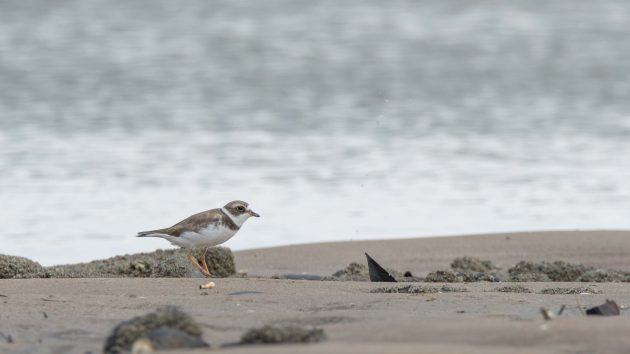
Its presence is a delightful surprise, a reminder of the many species that find temporary refuge on these shores during their migrations.
The second, new to me visitor, is a Ruddy Turnstone, a busy little bird known for its habit of flipping over stones to uncover food.
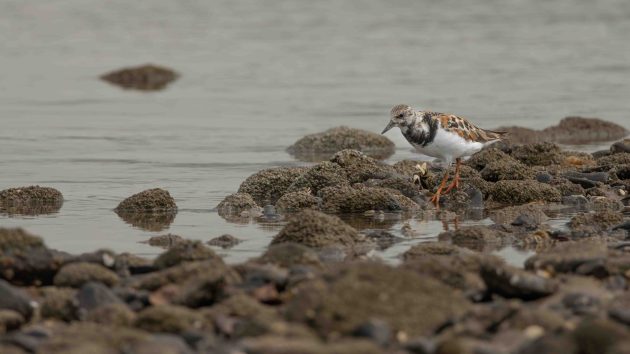
Its colorful plumage stands out against the duller tones of the mudflats, making it an easy to spot.
Today, I did not see the Seaguls, Terns, Magnificent Frigatebirds or the American Oystercatchers that sometimes feed in the area, but thats ok, because it makes a good excuse for a return visit.






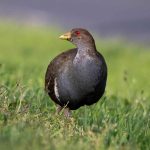
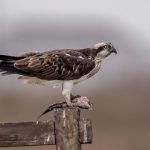





Leave a Comment